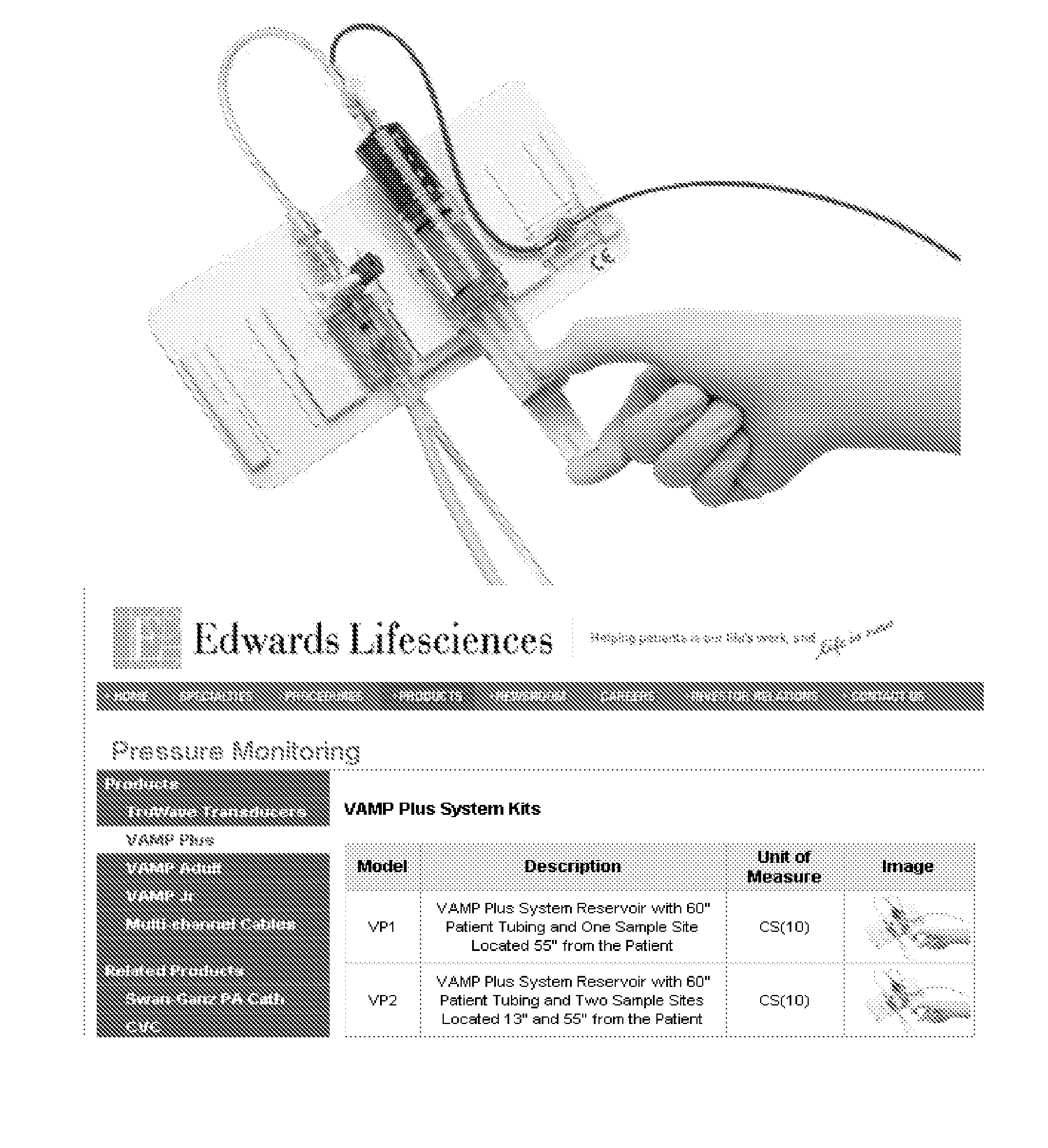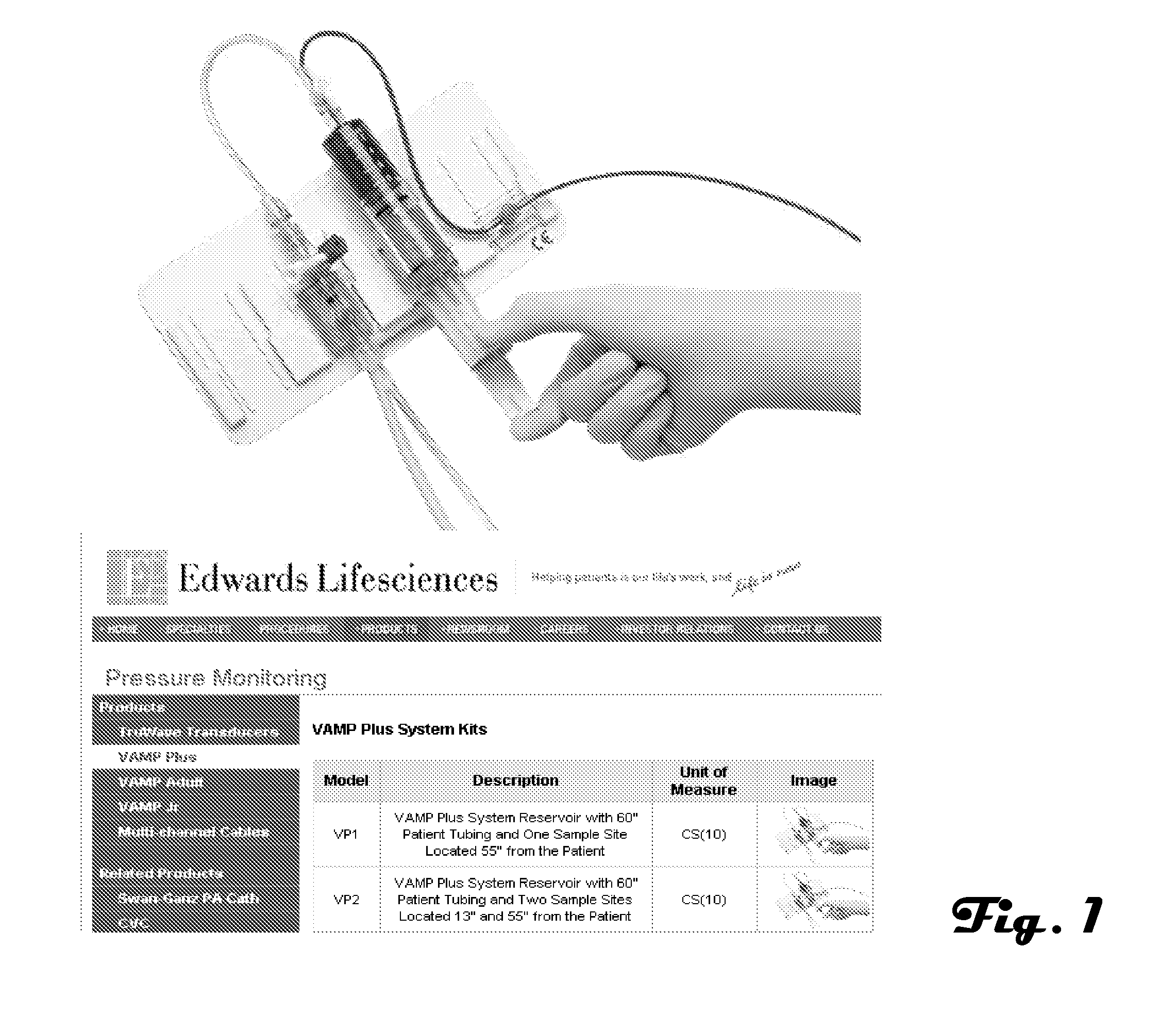Hemodynamic monitoring during automated measurement of blood constituents
a technology of automated measurement and hemodynamic monitoring, applied in the field of hemodynamic monitoring during automated measurement of blood constituents, can solve the problems of patient pressure monitoring stoppage, sample procurement from central venous catheters can also present problems, and the general undesirable of fingerstick measurements, etc., to reduce or eliminate the nuisance of hemodynamic alarms
- Summary
- Abstract
- Description
- Claims
- Application Information
AI Technical Summary
Benefits of technology
Problems solved by technology
Method used
Image
Examples
example embodiments
[0104]FIGS. 33 to 39 show a variety of configurations that satisfy the general objective of providing both hemodynamic monitoring as well as blood analyte measurements from a single access location. FIG. 33 illustrates a situation where the pressure transducer and the automated blood analyte system share a singular access site. No electrical connectivity is established between the pressure transducer and automated blood measurement system. Electrical connectivity exists between the automated blood analyte system and the automated blood analyte display. If hemodynamic monitoring disruption occurs then the automated blood analyte monitor display notifies the clinician via visual or audible alarms. FIG. 34 illustrates a situation where the pressure transducer and the automated blood analyte system share a singular access site. No electrical connectivity is established between the pressure transducer and automated blood measurement system. FIG. 35 illustrates a situation where the press...
PUM
 Login to View More
Login to View More Abstract
Description
Claims
Application Information
 Login to View More
Login to View More - R&D
- Intellectual Property
- Life Sciences
- Materials
- Tech Scout
- Unparalleled Data Quality
- Higher Quality Content
- 60% Fewer Hallucinations
Browse by: Latest US Patents, China's latest patents, Technical Efficacy Thesaurus, Application Domain, Technology Topic, Popular Technical Reports.
© 2025 PatSnap. All rights reserved.Legal|Privacy policy|Modern Slavery Act Transparency Statement|Sitemap|About US| Contact US: help@patsnap.com



